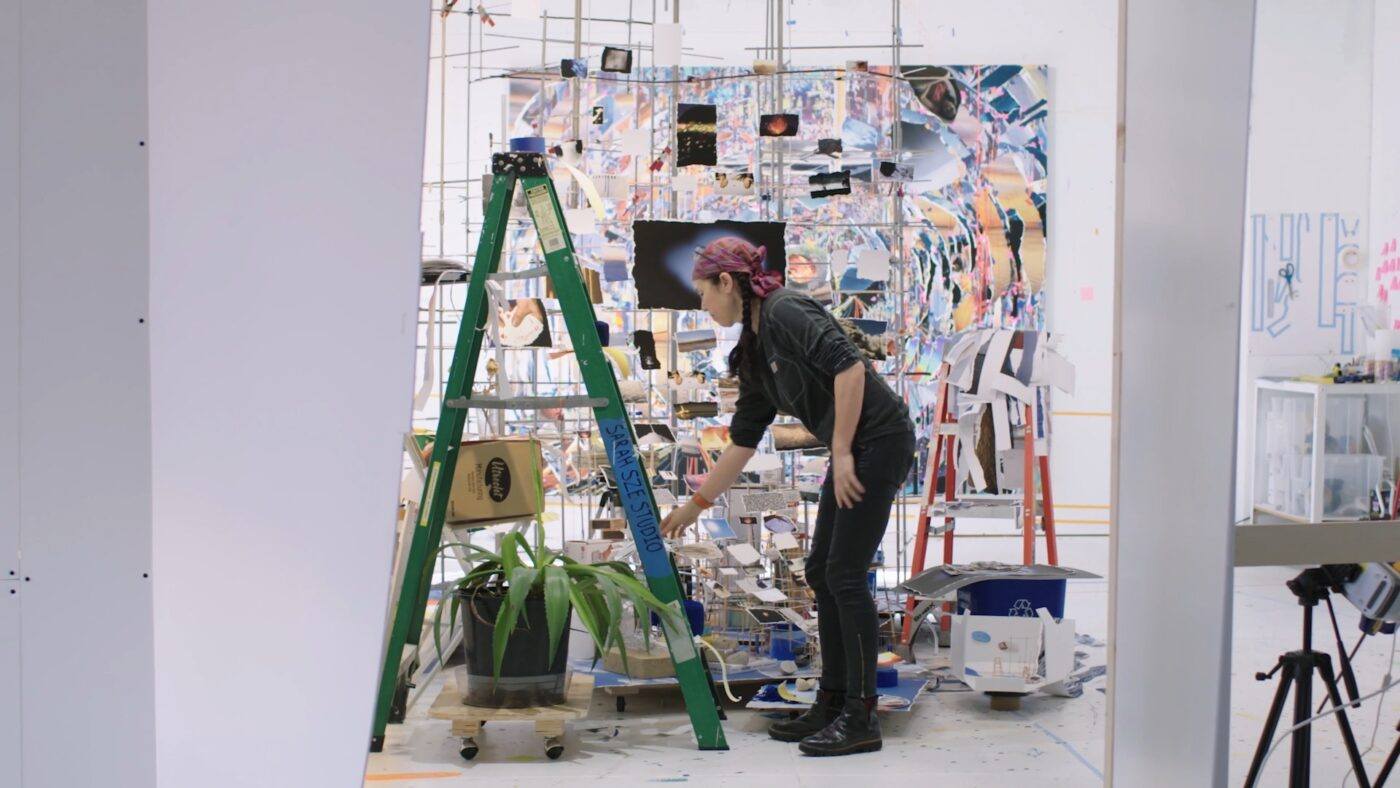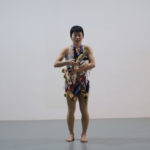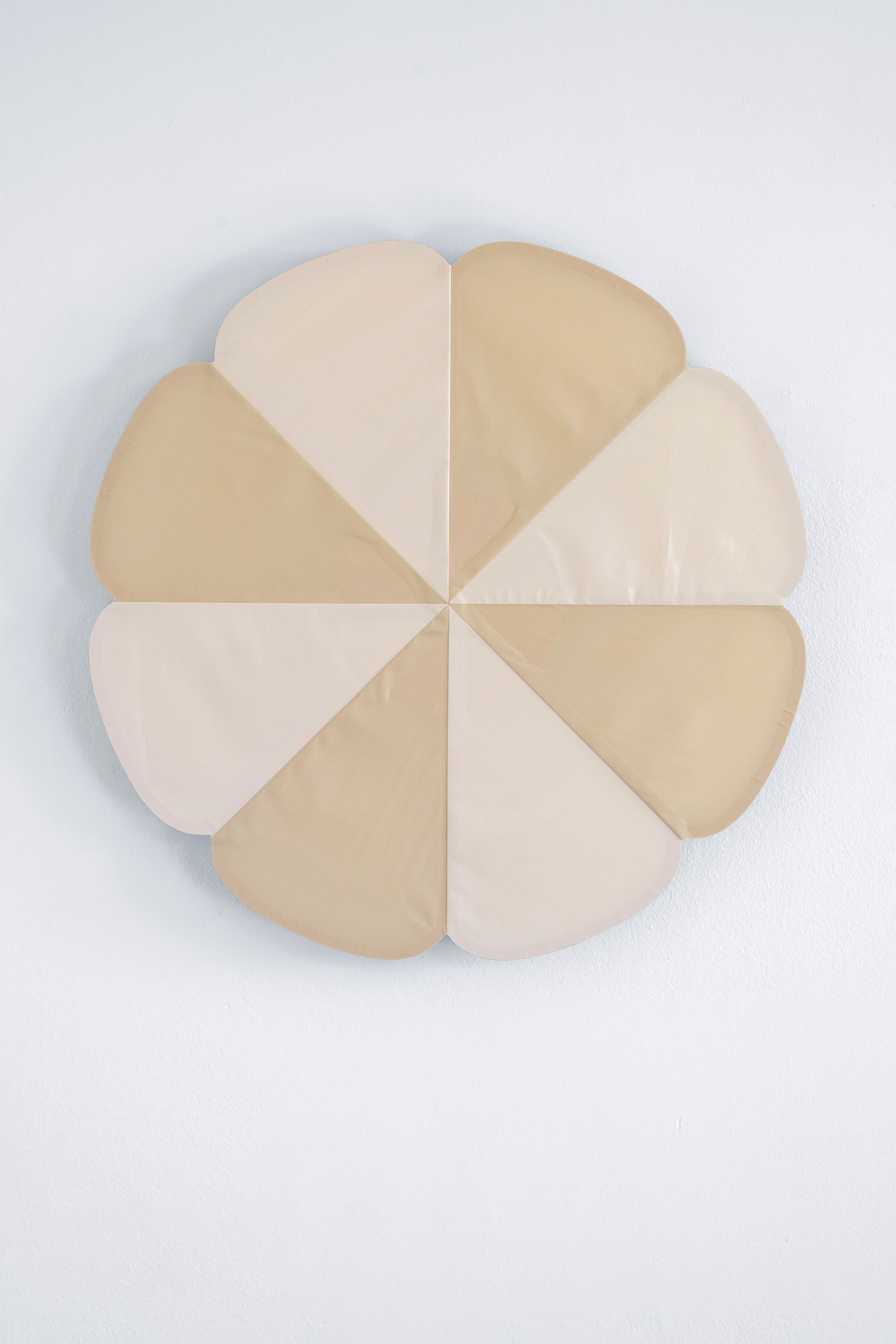Also Known As Jihadi
2017 - Film & Video (Film & Video)
99 minutes
Eric Baudelaire
Baudelaire’s latest film, Also known as Jihadi (2017) tells the story of a young French boy from Parisian suburbs and his assumed journey to the Al-Nusra front in Syria to join ISIS and fight Bashar al-Assad’s regime. Employing the cinematographic approach known as ‘landscape theory’ — or fûkeiron — developed out of Marxist film criticism in the 1970s where the landscape of a film is read as an expression of the political climate, thus becoming a significant character, motivation or reasoning for the films development. The 101-minute follows Abdel Aziz from the socially and politically rife milieu of the Parisian suburbs, weighted by division, segregation, development and poverty to, what the viewer assumes, Syria. Following landscape theory, the viewer does not see Aziz, rather his story is told through different landscapes, filmed in France, Spain, Algeria, and on the Syrian border in Turkey. The viewer is caught in a maelstrom of perceptions and realities, the aimlessness and alienation heavily felt in segregated communities, how society and the media define a terrorist or jihadist, and attempts to understand the motivations of the various evils experienced in our shared political condition. A grid of photocopied transcripts accompanies the film from Abdel Aziz trial that took place only weeks after the attack at the Bataclan in Paris in October 2015.
Currently based in Paris, Franco-American artist Eric Baudelaire has developed an oeuvre primarily composed of film, but which also includes photography, silkscreen prints, performance, publications and installations. In his research-based practice, the artist examines the relationship between images, past events and their documentation. Interested in the role of the cinematographic image as an index marker, Baudelaire creates narratives in which recorded facts serve as a starting point for an exploration of the unknown. In examining the changes in human behavior though interrogating the great political structures that govern the global, national and micro-communities, Baudelaire’s practice could be read through a bio-political perspective. Navigating the experience of urban living, the global, technical and economic dependencies of war, movement and the contemporary paradigm of geographical proximity and distance, Baudelaire’s practice evokes a hauntingly provocative perspective on the current political climate.
Colors:
Related works sharing similar palette

© » KADIST
Maria Taniguchi
2015Maria Taniguchi works across several media but is principally known for her long-running series of quasi-abstract paintings featuring a stylized brick wall device...

© » KADIST
Andrew Norman Wilson
2020On the first day of the Covid-19 lockdown in New York, Andrew Norman Wilson was evicted from his sublet and decided to board a $30 flight to Los Angeles that evening...

© » KADIST
Eileen Quinlan
2016Eileen Quinlan’s abstracted images, like Swipe , rely on the manipulation of photographic materials inside the studio itself, and reject the exterior world for complex interrogations of the medium....

© » KADIST
Olga Grotova
2022Our Grandmothers’ Gardens by Olga Grotova is based on the history of Soviet allotment gardens, which were small plots of land distributed amongst the families of factory workers to compensate for poor food supply in a country that was over-producing weapons...

© » ART21
Press Release: Art21 to Release New Film: “Sarah Sze: Emotional Time” | Art21 Our Series Art in the Twenty-First Century Extended Play New York Close Up Artist to Artist William Kentridge: Anything Is Possible Specials Art21.live An always-on video channel featuring programming hand selected by Art21 Playlists Curated by Art21 staff, with guest contributions from artists, educators, and more Art21 Library Explore over 700 videos from Art21's television and digital series Latest Video 16:41 Add to watchlist Guerrilla Girls in "Bodies of Knowledge" Art in the Twenty-First Century Season 11 June 23, 2023 Search Searching Art21… Welcome to your watchlist Look for the plus icon next to videos throughout the site to add them here...

© » KADIST
Dora Garcia
2008Dora Garcia’s work is a result of institutional critique and more generally that of language, following the conceptual artists of the 1960s like Weiner and Kosuth and Fraser from the 1980s and 1990s...

© » ART PIL
A Pick Gallery | ARTPIL MAIN ARTICLES PROFILES ANNOUNCEMENTS EXHIBITIONS WORKS COLLECTIONS ABOUT MAIN ARTICLES PROFILES ANNOUNCEMENTS EXHIBITIONS WORKS COLLECTIONS ABOUT ARTICLES art photography film + video culture + lifestyle exhibits + events features prescriptions PROFILES artists photographers filmmakers designers/architects fashion organizations/mags museums/galleries Search for: Search Button newsletter | facebook fb | instagram insta • Esmeralda Kosmatopoulos A Pick Gallery Turin Founded in June 2019, A PICK GALLERY is a contemporary art gallery that, as its name suggests, focuses on the research and selection of artists, emerging and established, on the international scene...

© » KADIST
Pratchaya Phinthong
Phinthong made four photographs depicting fragments of meteorites of which the faces have been polished to reflect the sky...

© » KADIST
Yoan Capote
2007Open Mind is a model created by Capote for a traversable public maze that, when seen from above, resembles the human brain...

© » KADIST
Juan Obando
2023They/Them by Juan Obando is a video essay and deepfake that uses Adobe Stock clips, maintaining their branded watermark, but animating the scenes underneath with a narrative of self-critical awareness...

© » ARTS EQUATOR
How the Singapore literary ecosystem tackles mental health | ArtsEquator Thinking and Talking about Arts and Culture in Southeast Asia ArtsEquator Viewpoints December 27, 2021 By Sarah Tang (1,450 words, 5-minute read) cw: Contains mentions of suicide There appears to be more local books and writing about mental health in the Singapore lit scene in recent years...

© » ARTS EQUATOR
Transgression, triggers, and the thousand cuts of “Blunt Knife” | ArtsEquator Thinking and Talking about Arts and Culture in Southeast Asia Articles Photo courtesy of the artist June 25, 2019 By Corrie Tan (2,700 words, 13 -minute read) Content Warning: Mentions of a sexual relationship involving a teenager This response contains major spoilers for Blunt Knife by Eng Kai Er and A Doll’s House by Theatre of Europe...








